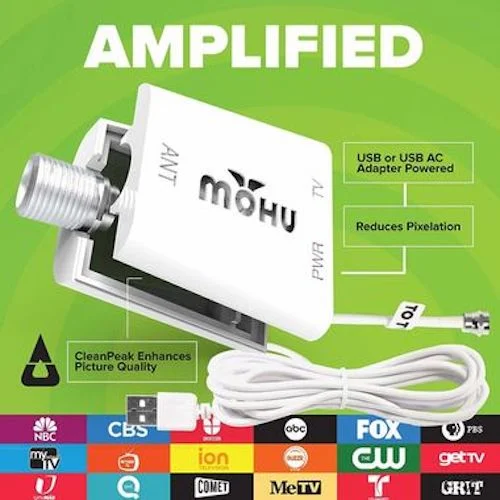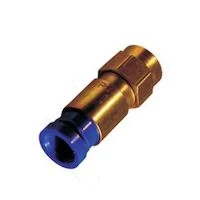OTA Reception Tip: Remove the Antenna Amplifier
If your over-the-air antenna reception is fading in and out removing the amplifier may help
It's best to avoid an amplifier if it all possible. A totally passive antenna system is almost always best. Amplifiers can create problems that are difficult to troubleshoot. Eventually, they all fail.
OTA TV Antennas are great for receiving some of the Best Free TV Channels
An antenna works great for receiving Free local channels like CBS, ABC, NBC, PBS, FOX, CW, and many more in 1080p HD. But if you are using a small amplified antenna, you may have issues with the signal sometimes.
Often simply adjusting the antenna or moving it around can fix this, but there could be a bigger problem lurking that may be the cause.
Many small indoor antennas come with an amplifier that will boost the signal.
If you have an amplifier attached to your antenna, this could actually hurt your reception. An antenna will amplify not only the TV signal, it also will boost noise, which can make your picture quality worse.
How Can I tell if My Antenna Uses an Amplifier?
Most amplifiers are powered and this means they need to plug into an AC electrical power outlet or USB port. They also make passive amplifiers which don't require AC power, but these are less common. So if your antenna requires a wall outlet or USB port, it uses an amplifier.
Another way to tell if it has an amplifier is it usually is in line with the coax cable that goes from an antenna to the TV. This requires two additional connectors than if it was plugged directly into the TV.
These connectors can also cause signal loss. If someone did not instal the connectors properly, or if they are the cheaper crimp type, this can be a big cause of signal loss. It can make your signal look terrible or mean the difference between no signal at all on weaker channels.
The best tool for adding connectors to a TV Antenna cable is a compression tool, not a crimp tool. A compression tool like this one is what the professional cable TV installers use. It provides the best signal possible from your antenna or satellite dish.
Also, get the right ends like these premium Thomas and Betts RG6 Connectors, which work with a cable end compression tool.
How To Get a Better TV Signal Without an Amplifer
Amplifiers are often used to make up for smaller antennas which are not large enough to pull in weaker signals. So they won't do much to enhance these signals because they also amplify the noise. The best way to increase antenna range and signal strength is to get a larger antenna.
Size and height are two factors can improve over-the-air signals performance. The bigger the antenna, the more surface area to capture distant signals. And since buildings, trees, or hills can inter-fear with the TV signal. Raising the antenna as high as possible will increase its performance as well.
Finally, aiming an antenna is also important. Use the FCC Antenna map to see where the transmitters are located for your favorite channels. This will show which direction is best to aim your antenna to receive your favorite channels.
If you have two competing channels that need to be aimed in opposite directions, an antenna rotator will make it easy to tune your antenna. We use this for a roof or attic antennas and it will give you the best picture quality possible.
For a nice Long Range Indoor Antenna, Check Out the Antop Big Boy 65 Mile Antenna
For the latest in TvStreaming and Cord-Cutting News
Join US @ Chitchat
And you will be notified whenever we post a new article
Join US @ Chitchat
And you will be notified whenever we post a new article
Thanks for Making us Your TV Streaming Destination
Roku Channels • Index • Contact • Disclosure • Privacy
© 2025 mkvXstream.com
Use of third-party trademarks on this site is not intended to imply endorsement nor affiliation with respective trademark owners.
We are Not Affiliated with or Endorsed by Roku®, Apple, Google or Other Companies we may write about.

© 2025 mkvXstream.com
Use of third-party trademarks on this site is not intended to imply endorsement nor affiliation with respective trademark owners.
We are Not Affiliated with or Endorsed by Roku®, Apple, Google or Other Companies we may write about.





